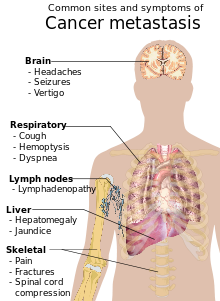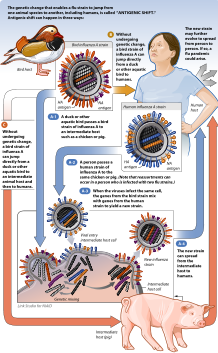 |


 ; ;
 


 |
| HOME | ABOUT MCK & HISTORY | OUR INSTITUTES | ACHIEVEMENTS | GALLERY | DONATION | AWARENESS PROGRAM | ACTIVITIES | CONTACT US |
AWARENESS PROGRAMS
 Cancer is the general name for a group of more than 100 diseases. Although there are many kinds of cancer, all cancers start because abnormal cells grow out of control. Untreated cancers can cause serious illness and death.
Cancer is the general name for a group of more than 100 diseases. Although there are many kinds of cancer, all cancers start because abnormal cells grow out of control. Untreated cancers can cause serious illness and death.
How Cancer starts:
Cancer starts when cells in a part of the body start to grow out of control. Growing out of control and invading other tissues are what makes a cell a cancer cell. Cells become cancer cells because of DNA (deoxyribonucleic acid) damage. DNA is in every cell and it directs all its actions. In a normal cell, when DNA is damaged the cell either repairs the damage or dies. In cancer cells, the damaged DNA is not repaired, but the cell doesn’t die like it should. Instead, the cell goes on making new cells that the body doesn’t need. These new cells all have the same damaged DNA as the first abnormal cell does. Most often DNA damage is caused by mistakes that happen while the normal cell is reproducing or by something in the environment. Sometimes the cause of the DNA damage may be something obvious like cigarette smoking or sun exposure. But it’s rare to know exactly what caused any one person’s cancer.
Cancer cells often travel to other parts of the body where they can grow and form new tumors. This happens when the cancer cells get into the body’s bloodstream or lymph vessels. The process of cancer spreading is called metastasis. A cancer may also cause symptoms like fever, extreme tiredness (fatigue), or weight loss.
Seven Steps to prevent Cancer:
1. Don’t use Tobacco.
2. Protect your skin from the sun.
3. Eat a healthy diet.
4. Maintain a healthy weight and be physically active.
5. Practice safer sex and avoid risky behaviors.
6. Get immunized (HPV & hepatitis vaccines).
7. Know your family medical history and get regular cancer screenings.
 Swine influenza also called pig influenza, swine flu, hog flu and pig flu, is an infection caused by any one of several types of swine influenza viruses. Swine influenza virus (SIV) or swine-origin influenza virus (S-OIV) is any strain of the influenza family of viruses that is endemic in pigs.
Swine influenza also called pig influenza, swine flu, hog flu and pig flu, is an infection caused by any one of several types of swine influenza viruses. Swine influenza virus (SIV) or swine-origin influenza virus (S-OIV) is any strain of the influenza family of viruses that is endemic in pigs.
Swine influenza virus is common throughout pig populations worldwide. Transmission of the virus from pigs to humans is not common and does not always lead to human flu, often resulting only in the production of antibodies in the blood. If transmission does cause human flu, it is called zoonotic swine flu. People with regular exposure to pigs are at increased risk of swine flu infection.
Prevention of pig-to-human transmission:
The transmission from swine to humans is believed to occur mainly in swine farms, where farmers are in close contact with live pigs. Although strains of swine influenza are usually not able to infect humans, this may occasionally happen, so farmers and veterinarians are encouraged to use face masks when dealing with infected animals. The use of vaccines on swine to prevent their infection is a major method of limiting swine-to-human transmission. Risk factors that may contribute to swine-to-human transmission include smoking and, especially, not wearing gloves when working with sick animals, thereby increasing the likelihood of subsequent hand-to-eye, hand-to-nose or hand-to-mouth transmission.
 Human immunodeficiency virus infection and acquired immune deficiency syndrome (HIV/AIDS) is a spectrum of conditions caused by infection with the human immunodeficiency virus (HIV). HIV is transmitted primarily via unprotected sexual intercourse (including anal and oral sex contaminated blood transfusions hypodermic needles, and from mother to child during pregnancy, delivery, or breastfeeding. Some bodily fluids, such as saliva and tears, do not transmit HIV.
Human immunodeficiency virus infection and acquired immune deficiency syndrome (HIV/AIDS) is a spectrum of conditions caused by infection with the human immunodeficiency virus (HIV). HIV is transmitted primarily via unprotected sexual intercourse (including anal and oral sex contaminated blood transfusions hypodermic needles, and from mother to child during pregnancy, delivery, or breastfeeding. Some bodily fluids, such as saliva and tears, do not transmit HIV.
Prevention of HIV infection, primarily through safe sex and needle-exchange programs, is a key strategy to control the spread of the disease. There is no cure or vaccine; however, antiretroviral treatment can slow the course of the disease and may lead to a near-normal life expectancy. If you inject drugs, don’t share your needles, syringes, or other drug equipment with your partner.
ultra-sonography, helps determine abnormalities in the fetus.
misused to find out sex of the fetus and abort it if it is a girl.
Why is female feticide a problem ?
Increase in violence against women- violation of their human rights.
Abortion due to family pressures to have male child.
effect on mental and physical health of woman.
More men in society due to sex selective abortions.
Prevention: The Ministry of Health & Family Welfare has adopted a multi-pronged strategy to check female foeticide, which includes legislative measures, awareness generation as well as programmes for socio-economic empowerment of women.The steps taken by the government to prevent female foeticideunder the Pre conception and Pre natal Diagnostic Techniques (Prohibition of Sex Selection) Act, 1994, PC & PNDT Act
